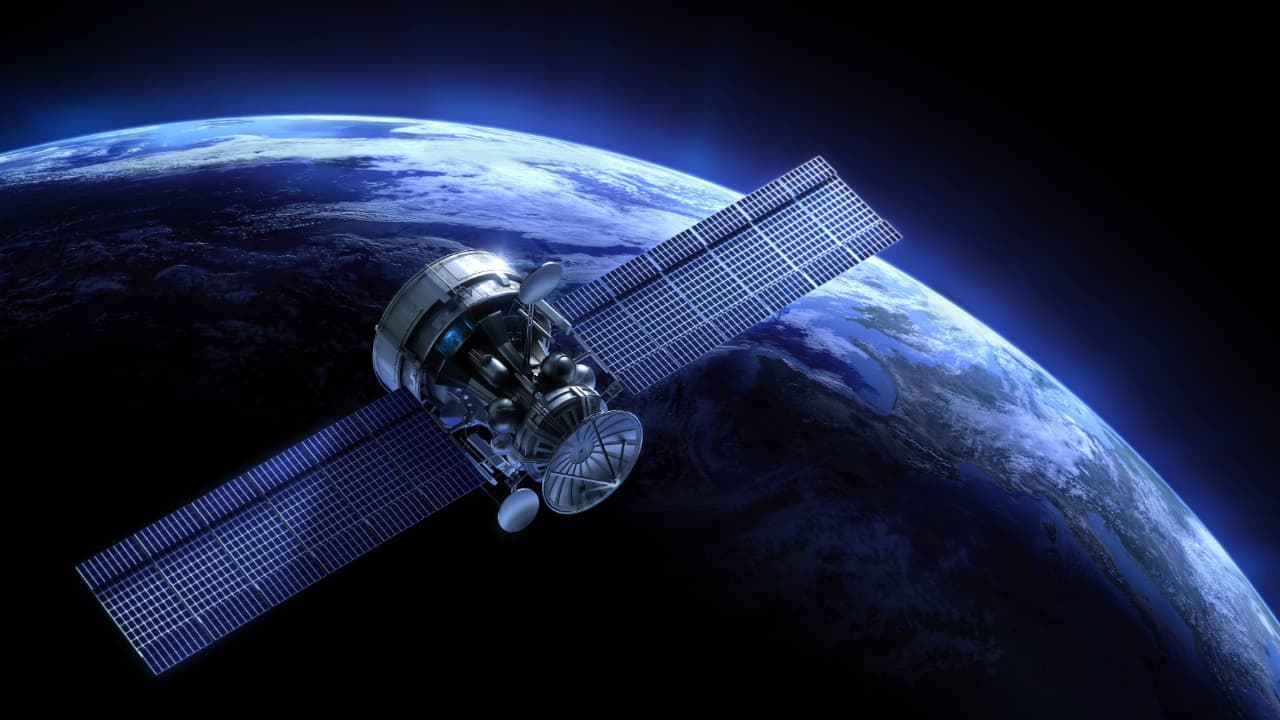New research reveals a surprising connection between rising CO₂ levels and the intensity of space storms. Increasing CO₂ leads to dramatic density changes during geomagnetic storms. This poses significant challenges for satellites. Let’s know more.
Saturn’s Moons
Saturn’s moon Titan has lakes and rivers, not of water, but of liquid methane and ethane.
New research shows that rising carbon dioxide (CO₂) levels in the atmosphere could make space storms more intense in the future, at least in the way they affect Earth’s atmosphere and satellites. The study looked at how the increasing amount of carbon dioxide in the upper atmosphere might change the way Earth reacts to geomagnetic storms. These storms are powerful bursts from the Sun that hit our planet and can affect satellites, GPS, radio signals, and even power grids.
What Are Geomagnetic Storms?
The research was led by scientists from the US National Science Foundation’s National Center for Atmospheric Research (NSF NCAR). Geomagnetic storms are also known as solar flares or coronal mass ejections. These are caused by massive explosions on the Sun’s surface. When these particles reach the Earth, they can temporarily disturb the upper part of our atmosphere. This can slow down the satellites and change their orbits.
Impact of Increasing CO₂
Rising levels of carbon dioxide make the Earth hotter. However, it’s interesting to note that it only affects the lower atmosphere near Earth’s surface. While on the other hand, increasing CO₂ actually cools the upper atmosphere. This cooling effect causes the upper atmosphere to become thinner over time, meaning it has fewer particles, like oxygen and nitrogen. That’s important because it affects how the atmosphere responds when a space storm hits.
Results of the Research
The NSF NCAR team used powerful models to study the entire atmosphere. They used data from a real storm that happened in 2024. Then they ran simulations to see how the atmosphere would have reacted to the same storm in different years, in the past and in future.
What they found was a bit unexpected:
• In the future, during a similar space storm, the upper atmosphere will be 20 to 50% less dense at the storm’s peak compared to today. That’s because there will be fewer particles to begin with, thanks to rising CO₂.
• However, even though the peak density will be lower, the relative change, from the atmosphere’s normal state to the storm’s peak, will actually be greater. Right now, a storm might double the density. In the future, it could nearly triple it.
Why Is It Important
This could drastically affect the upper atmosphere and if this continues, satellite engineers will need to rethink how they design and launch new spacecraft. Also, more dramatic changes in atmospheric density during storms could increase the risk of satellite collisions or loss of control, especially for the thousands of smaller satellites now orbiting Earth.
Lead researcher Nicolas Pedatella believes that more research is needed to study other types of geomagnetic storms and how their effects might change the way our satellites work.
This study is a reminder that climate change doesn’t just affect the weather we feel on the ground, it also influences space weather far above us. With our growing dependence on satellites for everything from GPS to internet and defence, understanding these changes is more important than ever.
